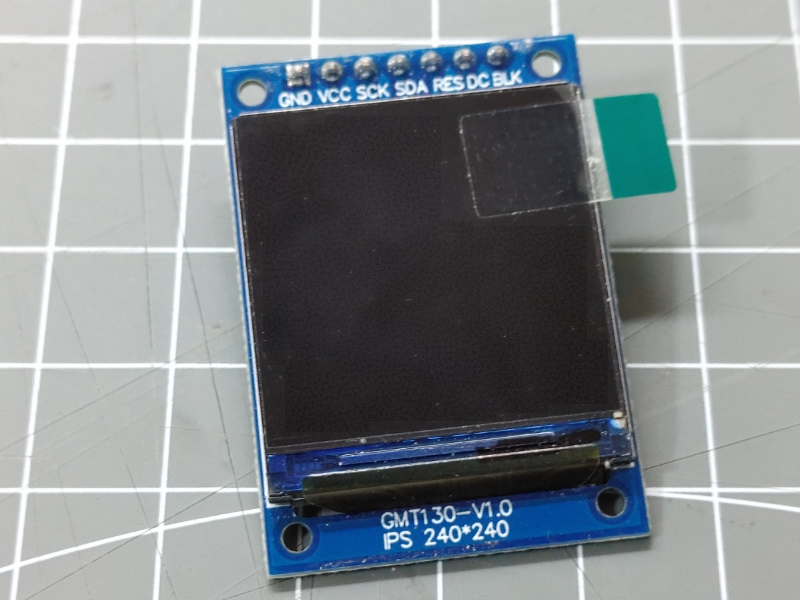Display Elements
The HomeDing library supports local displays attached via SPI and I2C bus to show values from the activated elements.
There is support for simple, single value displays and also pixel based monochrome and color displays.
The simple displays are using the inbound value of the element directly.
The Monochrome and Color Displays support displaying multiple values by using the Display Information Elements like text, numbers, signals and graphics that can be positioned on a page of the display using different fonts and colors.
The Monochrome and Color Displays will be activated already during the startup to display the device name and ip address.
Some boards like the Wifi Kit 8, the Wemos OLED or the TTGO T-Display ESP32 board already come with an onboard and you can find configuration hints in the boards descriptions.
Supported Display Chips
The following displays can show multiple values using DisplayText and DiplayDot Elements. When the display supports pixel level control also DisplayLine Element can be used.
| Driver Chip | Technology | Dimensions | Remarks |
|---|---|---|---|
| Text displays | |||
| Liquid Chrystal | LCD | 8/16/20 chars in 2/4 lines | character based |
| Monochrome | |||
| SH1106 | OLED | 128*32, 128*64 | GFX based |
| SSD1306 | OLED | 128*32, 128*64 | GFX based |
| SSD1309 | OLED | compatible with SSD1306 | GFX based |
| DisplayMAX7219 | LED | Chained LED matrix modules | GFX based |
| 16-bit Color | |||
| ST7789 | TFT LCD | up to 320*240 | GFX based |
| [ST7796] | TFT LCD | 320*480 | GFX based |
| ST7735 | TFT LCD | up to 132*160 | GFX based |
| ST7262 | |||
| ESP32Panel | TFT LCD | using the 16-bit panel bus | GFX based |
| ST7701 | TFT LCD | using the 16-bit panel bus | GFX based |
The DisplayButton Element can be used when a touch control is available within the display to allow click based activities.
Simple displays
The simple displays use LEDs or 7-segment LEDs to show a value:
| Driver Chip | Technology | Dimensions | Remarks |
|---|---|---|---|
| MAX7219 | LED | 8*7 segment LEDs | |
| TM1637 | LED | up to 6 7-segment LEDs | |
| MAX7219 | LED | 8*8 LED matrix modules |
::: sensor lcd The Liquid Chrystal displays based on the HD44780 chip are common in the Arduino framework.
To control them a I2C adapter with a PCF8574 chip must be used as the ESP8266 / ESP32 has not enough GPIOs to control it directly. :::
::: sensor max7219 MAX7219 is a LED driver for the I2C bus that can be used to control a 8x8 matrix of LEDs. Multiple displays can be chained to form a bigger matrix.
The special MAX7219 Element supports this chip. :::
::: sensor max7219n MAX7219 is a LED driver for the I2C bus that can be used to control a 8x 7-segment LEDs.
The special MAX7219 Element supports this chip. :::
::: sensor tm1637 TM1637 is a LED driver for up to 6 7-segment LEDs.
The 4 digit displays are supported by the TM1637 Element. :::
Pixel Based Monochrome Displays
::: sensor oled There are many OLED displays available using similar chips and drivers. They are controlled using the I2C or SPI bus.
Supported are the driver chips: SH1106, SSD1306, SSD1309 :::

The DisplayMAX7219Element uses LED matrixes as displays using the MAX7219 chip that can chain multiple 8x8 led displays.
Pixel Based Color Displays

Colorful displays are supported by the color configuration on the display elements.
The Display ST7789 Element supports the ST7789 driver chips.

Colorful displays are supported by the color configuration on the display elements.
The Display ST7735 Element supports the ST7735 driver chips.
Touch enabled Displays
Displays including a touch controller can be used to control the device by UI elements such as buttons.
See Display Touch Elements for more information about how to configure and use these display touch controllers.
Supported chips are:
Display Information Elements
A display usually can show more that just one single information. This is why there are some elements implemented that will put a specific type of information on the configured display:
- Display Text Element used for text and numbers
- Display a line
- Display a circle used to display boolean values
- Display a rect
Web UI for displays
For the display elements a special Web UI is implemented that shows the current display on the web UI of the device.
The frame is created from the display adapter elements while displaytext and displaydot elements put their information into the frame.
To keep the initialization in the required order it is recommended to configure the display adapter in the env.json and configure the text and dot elements in the config.json file.
Display configuration
address – For displays using the I2C bus the I2C address can be configured.
resetpin – For displays using a individual reset signal the pin can be configured.
height – The physical height of the display.
width – The physical height of the display.
rotation – The rotation of the display with possible values of 0, 90, 180 or 270. Using the rotation 90 or 270 the visible height and width are swapped from the physical height and width.
colOffset
rowOffset
Display actions
page – when multiple pages are defined the actual displayed page can be set.
Display events
onpage – These actions are send when the current displayed page is changed.
Startup and system information
On startup, when a display is configured, some system information is displayed before the elements are started. The same information is also written to the Serial interface and can be observed using the Serial Monitor.
- “HomeDing” This shows that the system is running a HomeDing sketch and that the display was recognized and is working.
- Devicename and IP address
- cleared